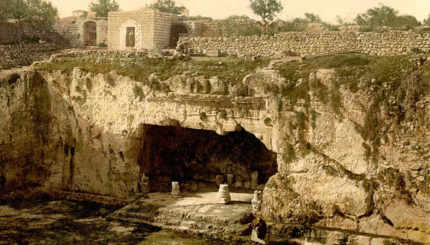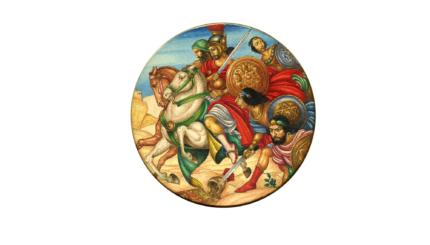Reprinted with permission from The JPS Guide To Jewish Women, (Jewish Publication Society).
Salome Alexandra (139-67 B.C.E), whose Hebrew name was Shelamzion, was a descendant of the Hasmonean family. Some historians have claimed that she was the first wife of Alexander’s older brother Aristobulus and became Alexander’s wife through the laws of the levirate. Whatever her previous marital status, however, Salome Alexandra was most certainly the wife of Alexander Jannai, with whom she had two sons, Hyrcanus II and Aristobulus II. Before her husband’s death he willed the secular government to her and the high priesthood to his oldest son, Hyrcanus.
 It was not the first time a Hasmonean ruler had designated his own wife as his successor. However, this time the succession was not contested, either by her sons or any other faction, and Salome Alexandra became the first Hasmonean woman to rule Judea as its queen.
It was not the first time a Hasmonean ruler had designated his own wife as his successor. However, this time the succession was not contested, either by her sons or any other faction, and Salome Alexandra became the first Hasmonean woman to rule Judea as its queen.
Taking the Law into Her Own Hands
During her nine-year reign, Queen Salome Alexandra completely reversed her late husband’s hostile policy toward the Pharisees and brought them into her government. Even while Alexander Jannai was alive she had invited Shimon ben Shetah, leader of the Pharisees, to her palace. Now she appointed him joint head (with Yehudah ben Tabbai) of the Great Assembly (Sanhedrin). She also allowed the oral law, espoused by the Pharisees, to be incorporated once again as the law of the royal court. By these acts, Queen Salome Alexandra maintained the support of the people.

Help us keep Jewish knowledge accessible to millions of people around the world.
Your donation to My Jewish Learning fuels endless journeys of Jewish discovery. With your help, My Jewish Learning can continue to provide nonstop opportunities for learning, connection and growth.
Although she is credited with establishing a period of comparative peace and restoring national unity in Judea, the Queen did not flinch from difficult and even brutal decisions. In spite of pharisaic policy opposing foreign conquests, she dispatched an army to Damascus, headed by her son Aristobulus. That military operation was a failure, but Salome Alexandra retained full power and lost no territory.
A Skillful Mediator & Politician
Her diplomatic skills proved more successful, and her timely gifts to the Armenian ruler, Tigranes, who was marching toward Judea, warded off an attack. Under Salome’s rule and probably with her tacit approval, Diogenes, a Sadducee who had been Alexander’s counselor and thus an opponent of the Pharisees, was executed. She did help to protect her son Aristobulus and other prominent Sadducees from the revenge of the Pharisees, but at the end of her life Salome was forced to stand against her younger son.
When Aristobulus II contested the claims of his older brother, Hyrcanus II, and began capturing key positions, she approved a military action to stop him. This set off yet another civil war, but Salome Alexandra did not live to see her sons destroy the peace she had established in Judea. Queen Salome Alexandra died at the age of seventy-three, loved by the Pharisees and hated by their opponents. Josephus criticized her harshly, suggesting that she was power hungry.
The Talmud, a rabbinic (and therefore a pharisaic) source, praises her as an intermediary between her husband, Alexander, and the Pharisee Shimon ben Shetah, and credits her with rescuing seventy elders who were condemned to death. Another Talmudic passage reports that during her reign the harvests in Judea were miraculously bountiful.


